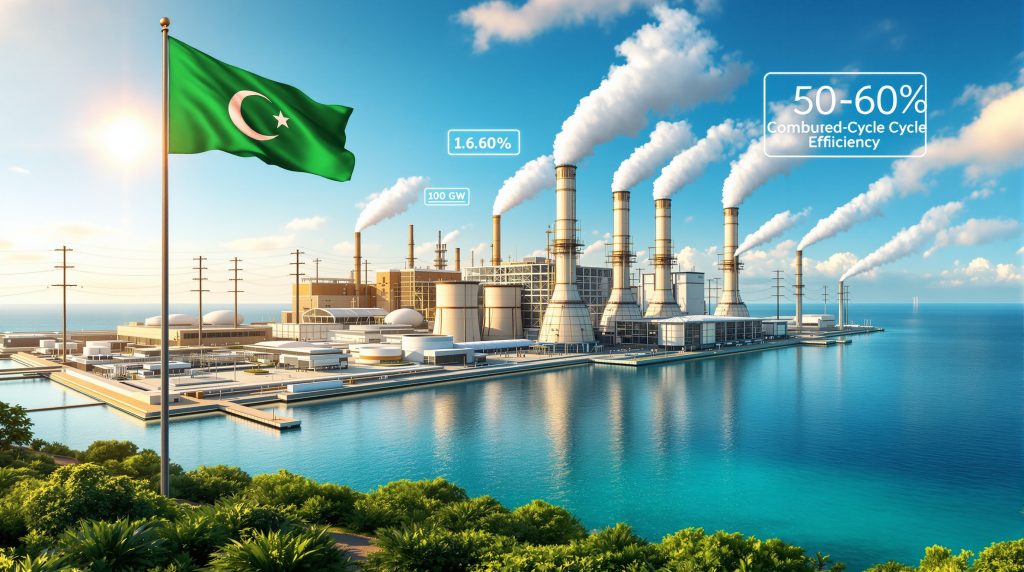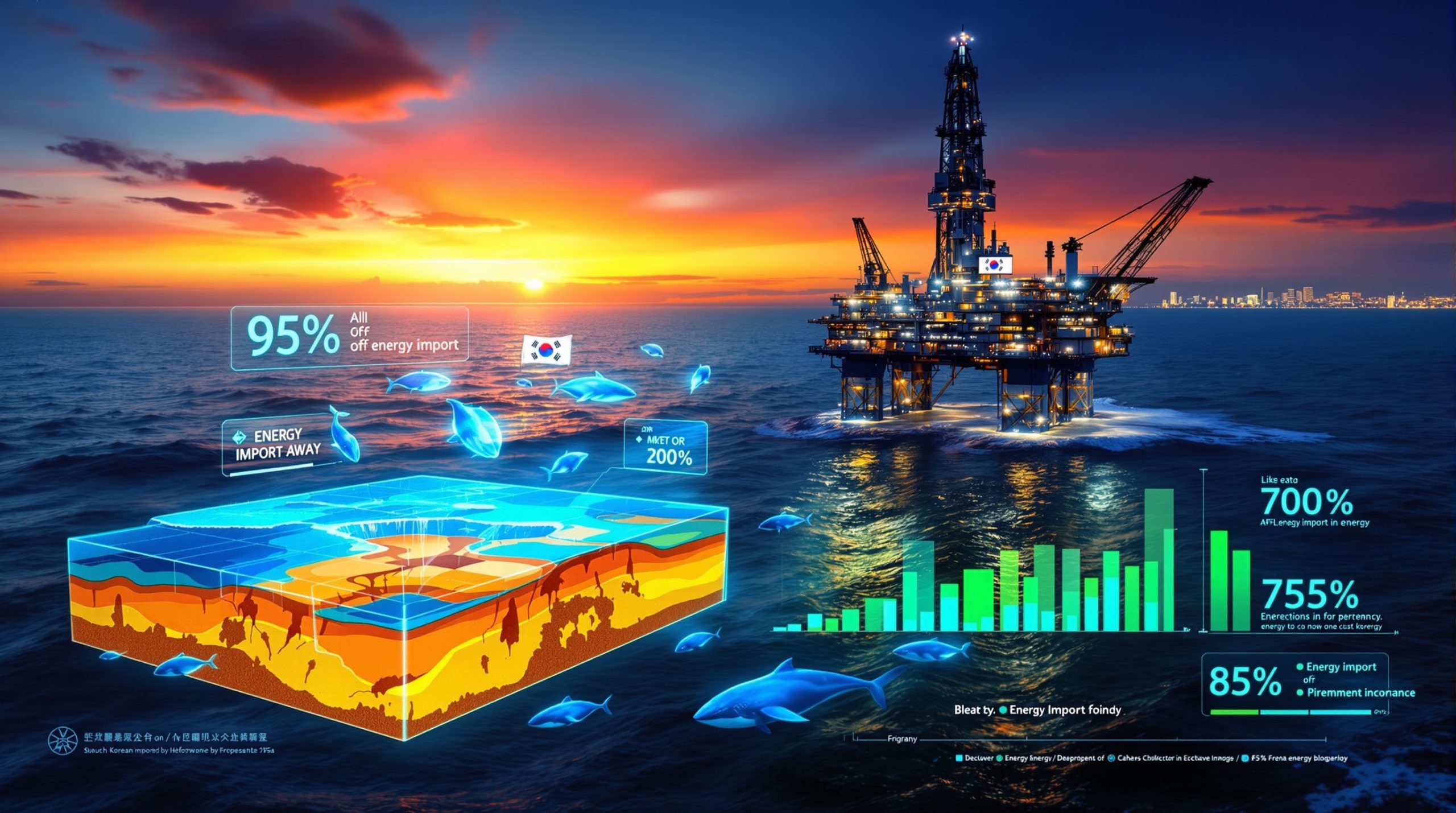What Makes Turkmenistan's Latest Energy Project Strategically Important?
Turkmenistan's announcement of a 1.6 GW combined-cycle power facility represents a fundamental transformation in Central Asian energy dynamics. The project, revealed by Energy Minister Annageldi Saparov on November 3, 2025, marks the nation's strategic pivot beyond traditional natural gas exports toward processed electricity generation along its Caspian coastline.
The initiative positions Turkmenistan as a potential electricity supplier to European and Middle Eastern markets while strengthening domestic energy security. This Turkmenistan green energy project creates new opportunities for cross-border power trade and regional grid integration, moving beyond the country's reliance on raw natural gas commodity exports.
The strategic importance extends to revenue diversification, as electricity exports offer higher value-added returns compared to pipeline gas sales. By utilizing domestic natural gas resources for power generation rather than direct export, Turkmenistan captures additional processing margins while reducing exposure to volatile natural gas pricing forecasts.
Regional Context and Export Potential
President Serdar Berdymukhamedov's November 2, 2025 meeting with Turkish energy company Çalik Holding highlighted Ashgabat's interest in establishing cross-Caspian electricity export agreements. The discussions focused on potential power sales to Turkey through submarine transmission infrastructure, representing a significant departure from traditional pipeline-based energy commerce.
The project aligns with broader regional energy transition strategies, including the trans-Caspian power line project launched by Azerbaijan, Kazakhstan, and Uzbekistan. This three-country initiative provides the primary viable mechanism for Turkmenistan to export electricity westward, with feasibility studies scheduled for completion in 2026.
However, Turkmenistan's formal participation in the trans-Caspian venture remains undetermined as of late 2025, creating uncertainty about integration timelines and commercial arrangements.
Understanding Combined-Cycle Technology in Modern Power Generation
Combined-cycle power plants represent advanced thermal efficiency technology, utilising sequential gas turbine and steam turbine operations to maximise electricity output from natural gas fuel sources. The primary gas turbine generates electricity while producing high-temperature exhaust gases, which subsequently create steam to drive secondary turbines.
This dual-generation approach achieves efficiency rates of 50-60%, substantially exceeding conventional single-cycle plants operating at 35-40% efficiency. The technology reduces fuel consumption per megawatt-hour while minimising carbon emissions compared to traditional thermal generation methods.
Technical Performance Advantages
| Technology Component | Efficiency Rate | Primary Benefit |
|---|---|---|
| Gas Turbine Stage | 35-40% | Primary electricity generation |
| Steam Recovery Stage | Additional 15-20% | Waste heat utilisation |
| Combined Operation | 50-60% total | Maximum fuel efficiency |
| Emissions Reduction | 30% vs. coal | Environmental improvement |
The process flow begins with natural gas combustion in the primary turbine, generating electricity while producing residual heat. This thermal energy creates steam through heat recovery systems, powering secondary turbines to generate additional electricity from otherwise wasted energy.
Manufacturing and Equipment Requirements
Combined-cycle projects typically require advanced turbine technology from established manufacturers including General Electric, Siemens, or Mitsubishi Heavy Industries. These partnerships provide cutting-edge efficiency standards, operational expertise, and long-term maintenance capabilities essential for complex power generation facilities.
International involvement facilitates financing arrangements, technical training programmes, and technology transfer opportunities that enhance domestic capabilities while ensuring reliable plant operations throughout the facility's operational lifetime.
Why the Caspian Coast Location Offers Strategic Advantages
The Caspian shoreline positioning provides multiple logistical and economic benefits for Turkmenistan's power generation expansion. Coastal access facilitates heavy equipment transportation during construction phases and ongoing maintenance operations, while proximity to existing natural gas infrastructure reduces fuel delivery costs and complexity.
Maritime location enables potential submarine cable connections for electricity exports, particularly relevant for trans-Caspian power transmission projects currently under development by neighbouring countries. The coastal positioning creates natural export corridors toward Turkey, Azerbaijan, and potentially European markets through existing and planned transmission infrastructure.
Geographic and Infrastructure Benefits
The location offers several practical advantages:
• Transportation Access: Simplified delivery of large turbine components and construction equipment via sea routes
• Fuel Supply: Direct connection to domestic natural gas pipeline networks
• Export Infrastructure: Potential for submarine power cables across the Caspian Sea
• Maintenance Efficiency: Coastal access for specialised equipment and technical personnel
• Grid Integration: Strategic positioning for regional power network connections
The Caspian location aligns with broader regional initiatives to establish energy corridors connecting Central Asian resources with Western consumption centres, creating opportunities for multi-directional power trade and seasonal demand balancing.
How This Project Fits Into Regional Green Energy Initiatives
Central Asia is experiencing unprecedented renewable energy development, with Kazakhstan, Uzbekistan, and Azerbaijan launching major solar and wind projects throughout 2024 and 2025. Turkmenistan's combined-cycle facility represents transitional technology, offering cleaner generation than traditional thermal plants while maintaining grid stability and baseload power reliability.
This approach creates a balanced energy portfolio for domestic consumption and export markets, providing reliable electricity supply that complements intermittent renewable sources during low wind or solar production periods. Furthermore, the project demonstrates the nation's commitment to implementing electrification & decarbonisation across its energy sector.
Bridge Technology Functionality
Combined-cycle plants serve essential grid balancing functions within renewable-integrated power systems:
• Rapid Response: Quick startup and shutdown capabilities for demand fluctuations
• Load Following: Flexible output adjustment to match renewable generation patterns
• Backup Generation: Reliable power during renewable resource unavailability
• System Stability: Consistent frequency and voltage regulation services
• Reduced Cycling: Lower operational stress compared to coal-fired alternatives
Regional Integration Opportunities
The trans-Caspian electricity transmission project creates potential integration opportunities for Turkmenistan's new generation capacity within broader regional power networks. This initiative enables seasonal demand balancing across multiple countries, enhanced energy security through diversified supply sources, and economic optimisation of generation resources.
Regional power grid interconnection reduces reliance on single-country energy dependencies while creating mutual energy security benefits through coordinated resource utilisation across national boundaries.
What International Partnerships Are Driving This Development?
While Minister Saparov confirmed international company involvement in the project, specific partners remained undisclosed as of the November 3, 2025 announcement. The engagement with Turkish energy company Çalik Holding suggests commercial interest from regional partners, though formal partnership arrangements require further clarification.
International partnerships typically encompass multiple project dimensions including technology supply, financing arrangements, construction management, and operational support services. These relationships bring essential expertise for complex power generation facilities while facilitating access to global capital markets and equipment suppliers.
Typical Partnership Models
Large-scale combined-cycle projects commonly utilise several partnership approaches:
• Equipment Supply: Advanced turbine technology from major manufacturers
• Engineering Services: Design, construction, and commissioning expertise
• Financing Arrangements: Development bank funding and export credit facilities
• Operational Support: Long-term maintenance and technical training programmes
• Technology Transfer: Knowledge spillover and domestic capability development
Moreover, successful energy sector partnerships often involve collaborative frameworks that extend beyond traditional contractor relationships.
Financing Mechanisms
Central Asian power projects increasingly utilise blended financing approaches combining development bank funding from institutions like the Asian Development Bank and European Bank for Reconstruction and Development, export credit agencies supporting equipment suppliers, private sector investment through power purchase agreements, and government guarantees for revenue certainty.
These structured financing arrangements enable large-scale infrastructure development while distributing risks among multiple stakeholders and ensuring project viability throughout extended operational periods.
How Will This Impact Turkmenistan's Energy Export Strategy?
Turkmenistan's traditional energy export model centres on natural gas pipeline sales to China, Russia, and Iran through long-term supply agreements. The Turkmenistan green energy project creates additional revenue streams while utilising domestic gas resources for value-added power generation rather than raw commodity sales.
This strategic shift captures higher processing margins while reducing dependence on volatile natural gas pricing and complex pipeline geopolitics. Electricity exports offer more flexible pricing mechanisms and shorter-term contract opportunities compared to traditional long-term gas supply agreements.
Market Access and Revenue Diversification
Cross-border electricity trade provides pricing advantages over pipeline gas exports, particularly during peak demand periods in importing countries. The facility's 1.6 GW capacity enables substantial export potential while meeting domestic consumption requirements and providing emergency backup for neighbouring countries during supply disruptions.
Minister Saparov indicated the project would create additional opportunities for electricity exports to Caucasus countries and Turkey, representing new market access beyond traditional gas export relationships. These electricity markets offer dynamic pricing based on real-time supply and demand conditions rather than fixed long-term contract rates.
Strategic Commercial Benefits
The transition toward electricity exports delivers several commercial advantages:
• Value Addition: Higher margins through processed energy products
• Market Flexibility: Shorter-term contracts and dynamic pricing opportunities
• Risk Reduction: Decreased exposure to pipeline politics and infrastructure disputes
• Revenue Diversification: Multiple income streams beyond traditional gas sales
• Regional Integration: Enhanced commercial relationships with neighbouring countries
What Are the Environmental Implications of This Technology Choice?
Combined-cycle technology produces approximately 50% fewer CO2 emissions per megawatt-hour compared to coal-fired generation, representing significant environmental improvement over older thermal plants. The technology also reduces local air pollutants including nitrogen oxides and particulate matter, delivering measurable environmental benefits while maintaining energy security.
For Turkmenistan's domestic grid, replacing ageing thermal infrastructure with modern combined-cycle plants provides environmental improvements without compromising electricity reliability or affordability for domestic consumers. This aligns with the broader green development initiatives being implemented across the region.
Emissions Performance Comparison
| Generation Technology | CO2 Emissions (kg/MWh) | Environmental Advantage |
|---|---|---|
| Coal-fired Plants | 820-1,000 | Baseline comparison |
| Combined-cycle Gas | 350-490 | 50% reduction vs. coal |
| Single-cycle Gas | 450-650 | 30% reduction vs. coal |
| Renewable Sources | 0-50 | 95%+ reduction vs. coal |
Transitional Environmental Strategy
Combined-cycle plants serve as bridge technology, providing grid stability while renewable energy capacity scales up across the region. The flexibility of gas-fired generation enables higher renewable penetration rates while maintaining system reliability through rapid startup capabilities, load-following operation during renewable output fluctuations, and backup power during low wind or solar production periods.
This transitional approach allows gradual decarbonisation while avoiding grid instability issues associated with rapid renewable deployment in systems lacking adequate backup generation capacity.
Regional Implications for Energy Security and Cooperation
Turkmenistan's power generation expansion contributes to regional energy independence by reducing reliance on external electricity imports during peak demand periods. Enhanced domestic generation capacity provides emergency backup for neighbouring countries during supply disruptions while creating opportunities for mutual energy security through coordinated resource development.
The trans-Caspian power line project launched by Azerbaijan, Kazakhstan, and Uzbekistan creates the primary framework for regional electrical integration. However, Turkmenistan's participation status remains undetermined, with President Berdymukhamedov not indicating whether formal participation discussions have occurred with project sponsors.
Geopolitical Considerations
The project's success depends partly on regional political stability and international relations, particularly regarding transmission infrastructure development and cross-border trade agreements. Turkmenistan's neutral foreign policy stance may facilitate broader regional cooperation compared to countries with more complex geopolitical alignments.
Regional cooperation through power sharing agreements creates mutual benefits including:
• Seasonal Balancing: Coordinated demand management across multiple countries
• Supply Diversification: Enhanced energy security through multiple generation sources
• Economic Optimisation: Efficient utilisation of generation resources region-wide
• Risk Mitigation: Reduced dependence on single-country energy sources
• Infrastructure Sharing: Cost distribution for transmission network development
Economic Impact and Investment Opportunities
Major power plant construction creates significant employment opportunities in engineering, construction, and ongoing operations. The project stimulates related industries including equipment manufacturing, maintenance services, and technical training programmes while generating long-term economic benefits through skilled workforce development and industrial competitiveness improvements.
The facility provides reliable, cost-effective electricity supply that enhances industrial development opportunities while generating export revenue from surplus power sales. Technology transfer and knowledge spillover effects create additional economic value through domestic capability enhancement and technical expertise development.
Industrial Development Catalyst
Large-scale power projects often drive broader infrastructure improvements including transportation networks, telecommunications systems, and industrial facilities. The Caspian coast location may stimulate port development and maritime infrastructure investments, creating multiplier effects throughout the regional economy.
Long-term economic benefits include:
• Employment Creation: Engineering, construction, and operational job opportunities
• Skills Development: Advanced power generation technology expertise
• Industrial Growth: Competitive electricity costs for manufacturing sectors
• Export Revenue: Foreign currency earnings from cross-border power sales
• Infrastructure Development: Transportation, communications, and port facility improvements
Investment and Financing Context
The project requires substantial capital investment for turbine equipment, construction, and supporting infrastructure. International partnerships facilitate access to development bank funding, export credit facilities, and private sector investment while ensuring technical expertise and operational reliability throughout the facility's operational lifetime.
These developments are increasingly showcased at events such as the global innovation expo, where energy sector leaders discuss emerging technologies and investment opportunities.
Investment decisions for energy infrastructure projects carry inherent risks including regulatory changes, market price fluctuations, and technological developments. Prospective investors should conduct thorough due diligence and consult qualified financial advisors before making investment commitments.
Future Outlook and Expansion Potential
As Turkmenistan develops solar and wind resources, the combined-cycle facility provides essential grid stability and backup generation capacity for renewable energy integration. The plant's operational flexibility enables higher renewable penetration rates while maintaining system reliability and electricity quality standards.
Future expansion possibilities include hybrid renewable-thermal generation complexes, energy storage integration for enhanced grid services, carbon capture technology implementation, and green hydrogen production using excess renewable capacity during high-generation periods.
Regional Energy Market Evolution
Central Asia's evolving energy landscape creates opportunities for expanded electricity trade, seasonal power sharing, and coordinated resource development initiatives. Turkmenistan's generation capacity expansion positions the country as a potential regional power hub, facilitating broader electrical integration across national boundaries.
The success of this initial combined-cycle project may catalyse additional power generation developments and accelerate regional grid interconnection initiatives. Market evolution depends on policy coordination, infrastructure investment, and commercial framework development across participating countries.
Scaling Renewable Integration
The combined-cycle facility's flexibility characteristics support progressive renewable energy deployment by providing:
• Grid Stabilisation: Frequency and voltage regulation during renewable intermittency
• Ramping Capability: Rapid output adjustment to compensate for renewable variations
• Reserve Capacity: Backup power during extended low renewable production periods
• System Services: Ancillary services essential for high renewable penetration
• Transition Support: Bridge technology enabling gradual grid transformation
The Turkmenistan green energy project represents a significant step toward regional energy transformation while maintaining operational reliability and economic viability throughout the transition period. Success depends on effective international partnerships, regional cooperation, and coordinated infrastructure development across Central Asian energy markets.
This analysis reflects current project announcements and regional energy developments as of November 2025. Energy infrastructure projects face various risks and uncertainties that may affect final outcomes, timelines, and commercial arrangements.
Looking for Strategic Energy Infrastructure Investment Opportunities?
Discovery Alert's proprietary Discovery IQ model delivers instant notifications on significant ASX mineral discoveries, including critical metals and energy transition materials that power major infrastructure projects like Turkmenistan's latest development. Stay ahead of market movements by accessing Discovery Alert's discoveries page to see how historic mineral discoveries have generated substantial returns, then begin your 30-day free trial today to position yourself at the forefront of emerging energy and resource opportunities.




